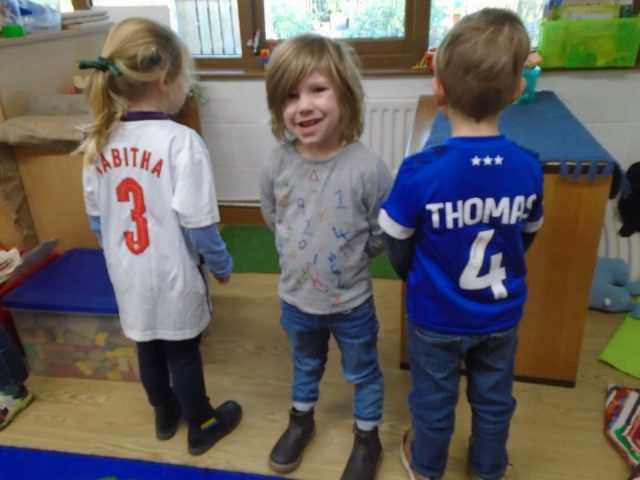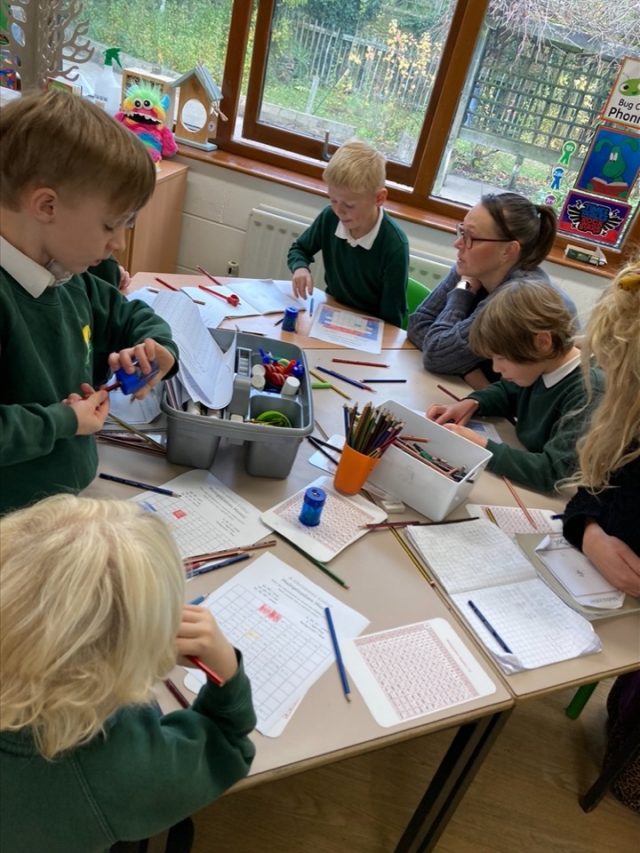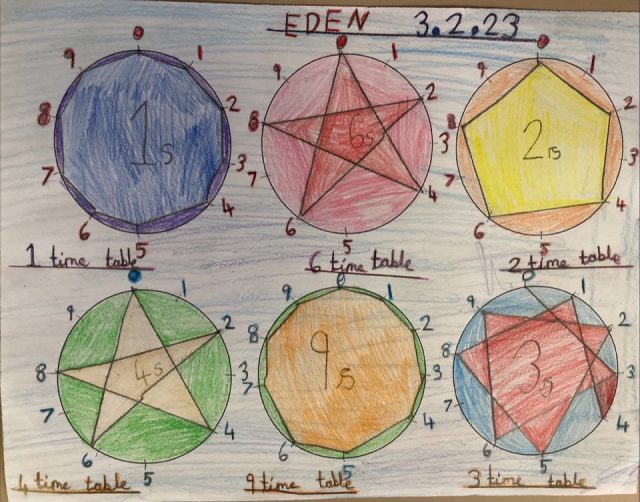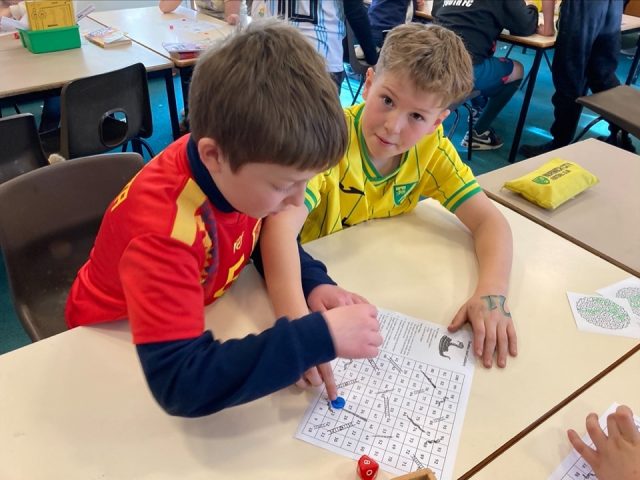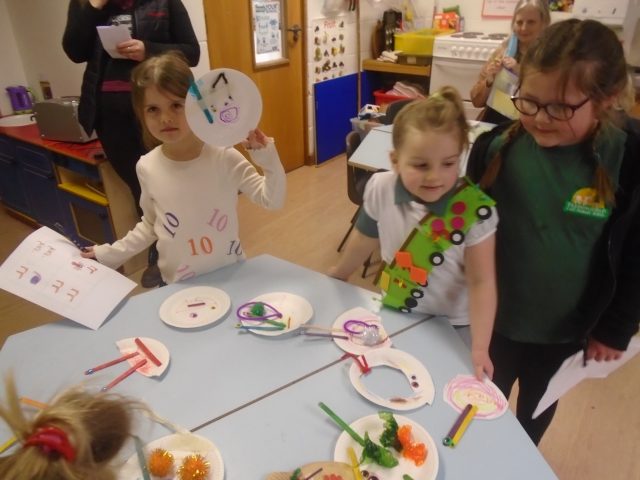Intent
Maths is taught daily in school, in all classes. We believe maths should be fun, exciting and challenging. We know some children may find tricky, but we work hard to build resilience and a love of maths in all classes. At the heart of maths is problem solving and connecting maths to real-life situations.
The national curriculum for mathematics aims to ensure that all pupils:
- become fluent in the fundamentals of mathematics, including through varied and frequent practice with increasingly complex problems over time, so that pupils develop conceptual understanding and the ability to recall and apply knowledge rapidly and accurately.
- reason mathematically by following a line of enquiry, conjecturing relationships and generalisations, and developing an argument, justification or proof using mathematical language
- can solve problems by applying their mathematics to a variety of routine and non-routine problems with increasing sophistication, including breaking down problems into a series of simpler steps and persevering in seeking solutions.
Implementation
From Early Years to Year 6, we understand the importance of using manipulatives (or objects) to aid our maths understanding. All classes have a designated maths area and a maths learning wall. From an early age, we encourage children to make choices about what they will use to help them with their maths.
When we begin teaching maths, we focus on concrete (or real) objects, to help children ‘see’ the maths. As children progress through the school, we use representations to teach and reinforce new concepts. We encourage jottings as a useful maths tool. Although we have a calculation policy, which shows clear progression as children move up the school, we also encourage children to try their own workings, as there is often more than one way to solve a problem.
We use the White Rose maths scheme to ensure good coverage and progression. This is a scheme which encourages ‘low-ceiling high-threshold’ learning, meaning that teachers can give children the opportunity to work together on problems, rather than ‘set’ for different ability group. This gives learners more chance to extend themselves and try ‘trickier’ work. White Rose gives children opportunities to practise the maths they have learned, and also to apply it. In addition, we use ‘challenge by choice’, which means that children are making their own choices about their learning. We assess children’s maths in Key Stages 1 and 2 using ‘I can …’ statements, and in Early Years through active learning and hands-on activities, using Tapestry.
We try to make learning fun by planning in activities such as outdoor learning, cooking and shopping, as there is a wealth of maths around us. We also celebrate whole-day events, such as Numbers Day, as this gives us all an opportunity to apply our maths skills in fun and often creative situations.
All children take home weekly maths homework, which will might be a practical activity or reinforcing something newly-learned in school. We use a variety of different incentives, to encourage children to feel proud of completing their homework.
From time to time, children may benefit from additional booster classes, which we call Early Birds. These take place just before or at the start of the school day, and are specifically planned to move groups of children on quickly, in a small group. We also organise a weekly math booster class for children in Year 6, which is a smaller, less formal environment than the often busy classroom. For both these intervention groups, we offer children a chance to move on and become more confident with their maths, in addition to their daily maths lesson.
EYFS
In Early Years, Mathematics involves providing children with opportunities to develop and improve their skills in counting, understanding and using numbers, calculating simple addition and subtraction problems; and to describe shapes, spaces, and measure. In the Reception class, we introduce a new number each week, with a focus on depth. Children are introduced early to the concepts of adding, subtracting, grouping (multiplication) and sharing (dividing). The teacher will also link the learning to time, shape and measure each week, thus encouraging breadth of knowledge, application of number and deeper thinking.
Pupils are taught to
Number
- count reliably with numbers from 1 to 20
- place them in order and say which number is one more or one less than a given number
- add and subtract two single-digit numbers and count on or back to find the answer using quantities and objects
- solve problems, including doubling, halving and sharing
Shape, space and measure
- use everyday language to talk about size, weight, capacity, position, distance, time and money to compare quantities and objects and to solve problems
- recognise, create and describe patterns
- explore characteristics of everyday objects and shapes
- use mathematical language to describe them
Key Stage 1
The National Curriculum (2014) states that:
The principal focus of mathematics teaching in key stage 1 is to ensure that pupils develop confidence and mental fluency with whole numbers, counting and place value. This should involve working with numerals, words and the four operations, including with practical resources [for example, concrete objects and measuring tools].
At this stage, pupils should develop their ability to recognise, describe, draw, compare and sort different shapes and use the related vocabulary. Teaching should also involve using a range of measures to describe and compare different quantities such as length, mass, capacity/volume, time and money.
By the end of year 2, pupils should know the number bonds to 20 and be precise in using and understanding place value. An emphasis on practice at this early stage will aid fluency.
Pupils should read and spell mathematical vocabulary, at a level consistent with their increasing word reading and spelling knowledge at key stage 1.
Lower Key Stage 2
The National Curriculum (2014) states that:
The principal focus of mathematics teaching in lower key stage 2 is to ensure that pupils become increasingly fluent with whole numbers and the four operations, including number facts and the concept of place value. This should ensure that pupils develop efficient written and mental methods and perform calculations accurately with increasingly large whole numbers.
At this stage, pupils should develop their ability to solve a range of problems, including with simple fractions and decimal place value. Teaching should also ensure that pupils draw with increasing accuracy and develop mathematical reasoning so they can analyse shapes and their properties, and confidently describe the relationships between them. It should ensure that they can use measuring instruments with accuracy and make connections between measure and number.
By the end of year 4, pupils should have memorised their multiplication tables up to and including the 12-multiplication table and show precision and fluency in their work.
Pupils should read and spell mathematical vocabulary correctly and confidently, using their growing word reading knowledge and their knowledge of spelling.
Upper Key Stage 2
The National Curriculum (2014) states that:
The principal focus of mathematics teaching in upper key stage 2 is to ensure that pupils extend their understanding of the number system and place value to include larger integers. This should develop the connections that pupils make between multiplication and division with fractions, decimals, percentages and ratio.
At this stage, pupils should develop their ability to solve a wider range of problems, including increasingly complex properties of numbers and arithmetic, and problems demanding efficient written and mental methods of calculation. With this foundation in arithmetic, pupils are introduced to the language of algebra as a means for solving a variety of problems. Teaching in geometry and measures should consolidate and extend knowledge developed in number. Teaching should also ensure that pupils classify shapes with increasingly complex geometric properties and that they learn the vocabulary they need to describe them.
By the end of year 6, pupils should be fluent in written methods for all four operations, including long multiplication and division, and in working with fractions, decimals and percentages.
Pupils should read, spell and pronounce mathematical vocabulary correctly.
We also use IT opportunities such as online games or songs to encourage children’s maths learning. In order to encourage children to practise independently, we may organise online events, such as times tables tournaments between classes to encourage motivation.
As teachers, we are aware of the need to assess accurately so, we use end-of-term NFER tests for children from Year 1 upwards. We may also short weekly assessments, eg practising times tables in Key Stage 2. As a leader, the maths subject lead will use book looks, learning walks and pupil perception questionnaires, as well as conduct planned team-teaching, alongside colleagues, as part of our ongoing CPD.
Impact
The impact of our maths curriculum is that children understand and feel confident about maths in school, and can apply their learning to real-life. Our children have a positive, can-do attitude, and enjoy discussing maths with partners and the class during their lessons. Children in Fressingfield can see that maths is promoted as being enjoyable, interesting and manageable, and that making mistakes is part of learning and progressing. Children know there is equipment to help them, and that there are different ways to solve a problem. When you see our children’s maths books, you will see a school that sets a high standard in maths, and pupils who rise to this standard, challenging themselves. Children know their books will be marked regularly and that feedback will move them on.
Teachers and teaching staff at Fressingfield enjoy teaching maths, and know that they are using a great scheme, which they feel confident in using. They know they have a maths lead they can speak with, and that there will be regular and quality CPD, in order to move them on with their maths journey as educators. Visitors to our school will enjoy seeing a range of maths being taught, in books and displayed around school.
Here is an example of Early Years maths progression over a year, and how it fits in with other Early Learning Goals. The Birth to 5 Matters document is used to inform planning. birthto5matters.org.uk
